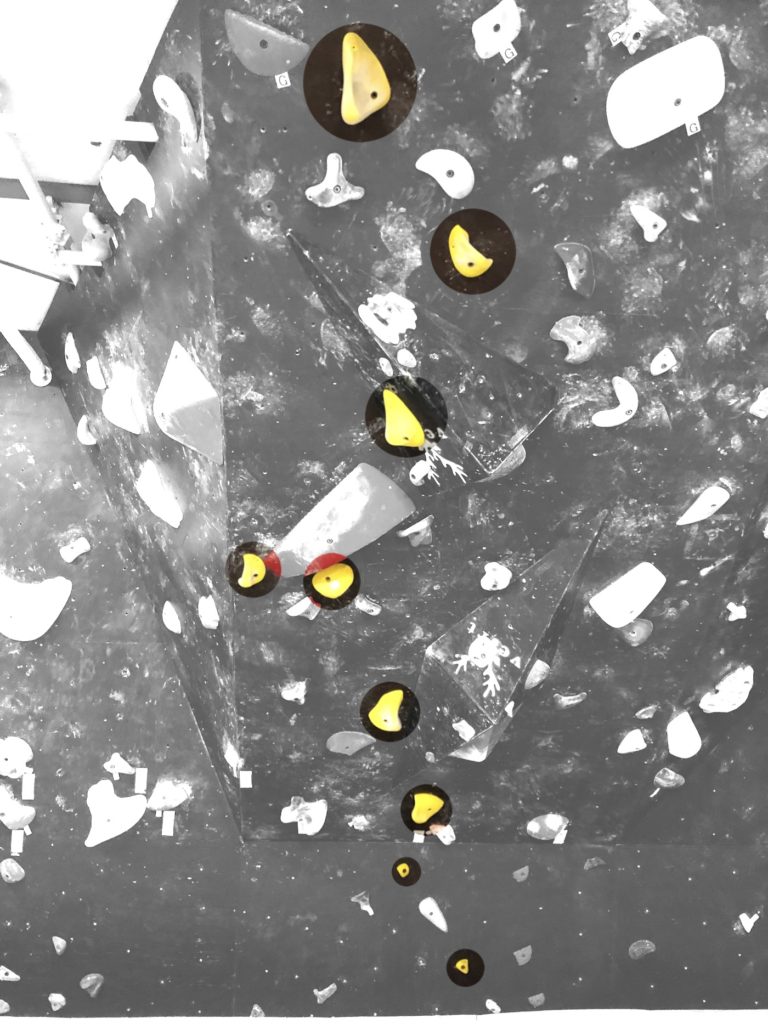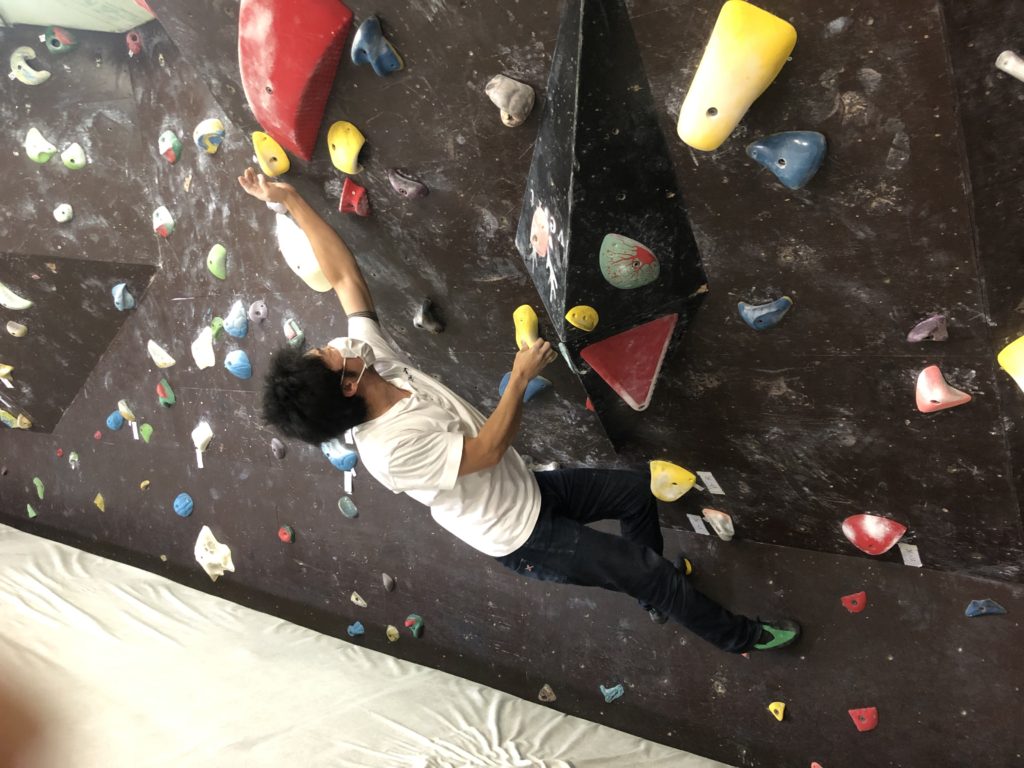This is a basic problem on steep wall that using Theory series. Although big cross moves and subsequent turnaround are the heart of this exercise, the first, second and third moves are the most important to learn the technique. It’s easy to get distracted by the big moves, but the first three are the most important parts of the game.
Overall
Wall Angle: 40° (130°) / Wall Height: 3.5m / Location: Vert / Set by Mitsuo

The fourth move is on the side of the volume, but for the flat wall, you can choose a slightly more positive hold in a similar position.
HOLDS
SET Name: Theory
From Top to Start
- TH-LG2.4 (Top)
- TH-LG2.2
- TH-LG1.3
- TH-LG1.1
- TH-LG1.5
- TH-LG1.2
- TH-MD1.4 (Start)
- Foothold unknown
VIDEO
Point of Movement

When you go to get the side jug on the volume.
It’s easy to see how easy it is to raise your shoulders, make the form correctly, and how easy it is for the climber’s upper body habits to show up when taking a posture that connects from the hips. Please watch a video of your own climb to confirm this.

The move to take the second move from the first move. A dead point where your spine naturally stretches. Repetition practice gives you the sensation that your spine will stop growing.
It is the position of the foot hold that determines how good this dead point is. If it is too left, the axis is not strait, if it is right, it is not dead, if it is up, it is jammed and the hips fall off, and if it is down, a small person cannot reach it. The only way to be able to choose the perfect one point of the foot-hold is through trial and error. Don’t compromise on the angle or position of the foot-hold.
Key of hold

This key hold is from ‘Theory’ Large Set, used for the first move. The left foot hold is placed in a position where you can step forward and through, so you can learn a gentle, tall dead point by choosing a shape that is a governor for the first move but comes out a bit.
Choosing a stance and hold that allows your right and left legs to work smoothly together is very difficult. It takes deep understanding and long practice, so you need to climb into it until you get a good feel for it. Examine your movements and interlocking over and over again on simple, well-set challenges.
